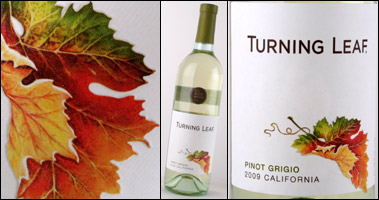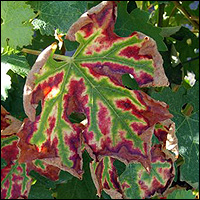September 15th.
Yeah, this was a little while ago . . . .
It was time to harvest the Merlot from the vineyard in Saint Helena. Todd and I drove up early morning to pick it up. I love the blanket of morning fog over the vines.

The crew there harvested the fruit into the macro bin and used their forklift to lift the half ton bin onto Todd's truck. Then we drove back down to my house in Napa. This pick was very last minute, and it was only half a ton, so we didn't ask for any help. I think this was a mistake.
Due to the fact that we had no extra hands this day, Todd and I wanted to be really efficient in our set-up. When we filled this tank with the Barbera, we de-stemmed into a macro bin and then bucketed the fruit into the tank. This time we thought it would be more efficient to de-stem directly into the tank. Here Todd is setting up the destemmer on the top of the tank.
We also backed up the truck as close to the tank as possible so we could grab clusters from the bin directly to the de-stemmer.
Next we needed to collect all the stems, so we backed up my yard waste bin to the other side of the de-stemmer to catch them as the fell.

I was really impressed with our set-up, so I asked my neighbor to take a picture. I'm standing on the bed of the truck, pulling individual clusters from the macro bin to the destemmer. Todd is standing on a ladder between the truck and the tank, cranking the destemmer.
Unfortunately, the same thing always happens when I hand over my camera. Blurry pictures. I might look happy in this picture because it was the beginning of the process and I was very impressed with our ingenuity, but that wore off quickly when I realized how long it was going to take to finish. All of sudden a half ton of fruit seemed very overwhelming when you grab it cluster by cluster.
I took this picture to celebrate the empty bin. Not only was this the last fruit of the day, but of the year. Additionally, this was particularly triumphant because it took us a really long time to finish and we were both losing steam. I can only speak for myself but I was pretty miserable the last 2 hours of this process.
I thought we were clever going directly to the waste bin. When we had many people helping, we collected the stems in small bins and then rotated dumping them in the large waste bin.
Stepping back though, you can see that we didn't have 100% aim into the bin.
And stepping back further you can see that there was still a lot to clean up. Still though, I'm going to call this one a win.

This was the last time for another year that I would have to clean up the basket of the destemmer!! This was my least favorite item to have to clean up. All the nooks and crannies and sharp edges, good riddance!
I think we celebrated with Jamba Juice because were so exhausted we didn't even want to have to chew our food, but next year I would like to prepare something more epic.
For example,
This was lunch to celebrate the last day of harvest at my real job.
And this was dessert. More bubbles, creme brule with chocolate biscotti.
This is why we still have real jobs.
-L













































